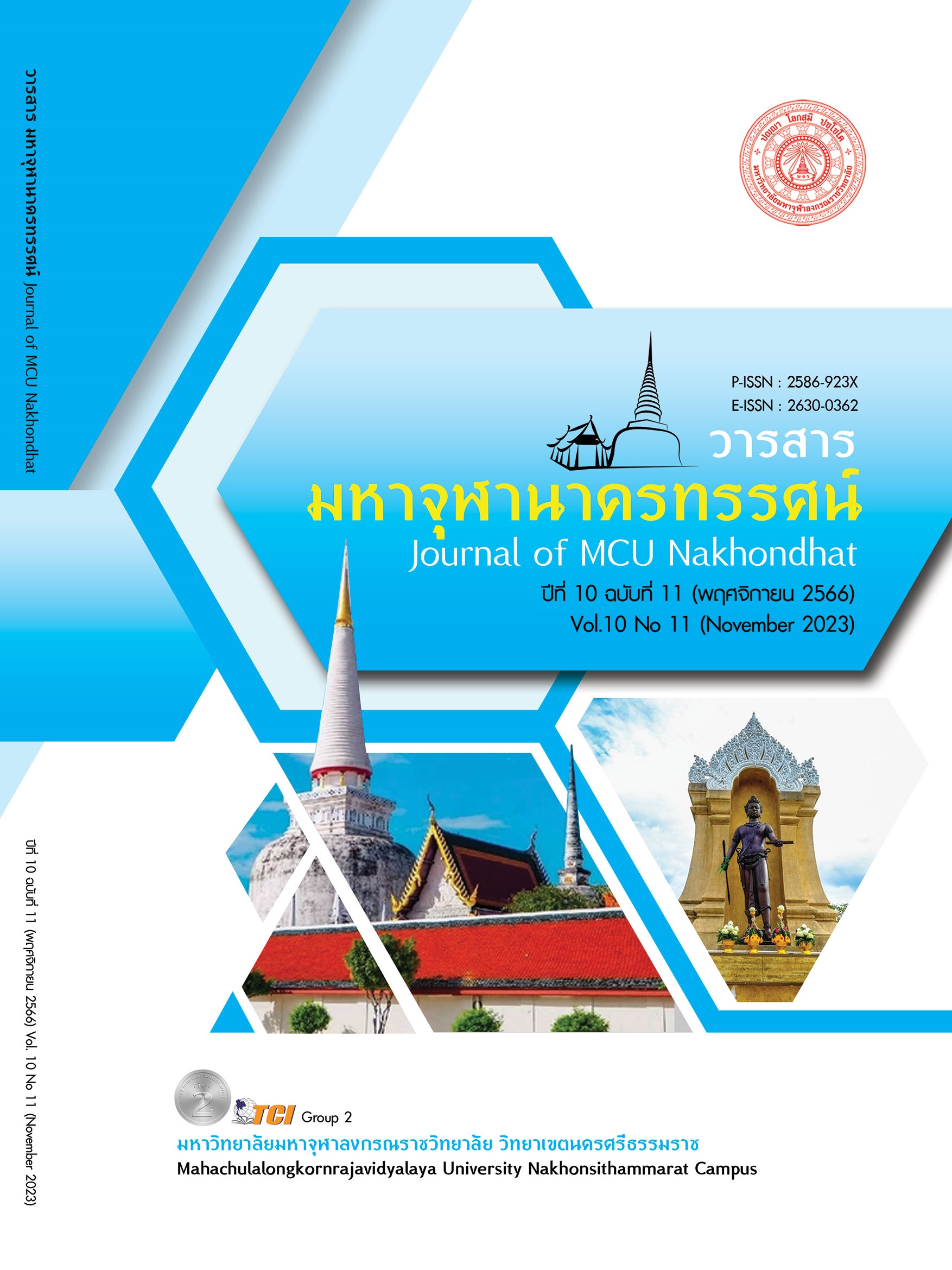DEVELOPMENT OF LEADERSHIP ACCORDING TO THE PRINCIPLES OF SAPPURISADHAMMA OF KAMNANS AND VILLAGE HEADMEN CHANG KLANG DISTRICT, NAKHON SI THAMMARAT PROVINCE
Main Article Content
Abstract
The objectives of this research are to: 1) study the development of leadership according to the principles of Sappusadhamma of village headmen, Chang Klang District. Nakhon Si Thammarat Province What should it be? and 2) study suggestions and recommendations regarding leadership development according to the principles of Sappurisadham of kamnans and village headmen in Chang Klang District. Nakhon Si Thammarat Province What should it be like? The population includes people in the Chang Klang District area. Nakhon Si Thammarat Province, by employing mixed methods, 13,451 people. The sample size was determined by opening the ready - made tables of Krejie and Morgan. The sample size was 375 people. The tool used to collect data was a closed - ended questionnaire. Data were analyzed using computerized programs. Statistics used to analyze data: general information, find percentage (Percentage), find mean (Mean), standard deviation (Standard Deviation), and synthesize summary of interviews with key informants, 17 photos/person. Research results: Developing leadership according to the principles of Sappurisadhamma of kamnans and village headmen in Chang Klang District. Nakhon Si Thammarat Province The average was at a moderate level ( = 3.44). When considering each item, it was found that; Leadership in the aspect of self - awareness has the highest average (
= 4.19), and Leadership in recognizing causes. has the lowest average (
= 2.92) respectively. Suggestions found that the village headman Assistant village headman as well as those involved There should be integration to upgrade skills and potential. Leaders should be aware of community problems. Adapt to the community Have friendly words or gestures Be patient, discreet, and always appropriate. in solving problems to match the conditions of the community Should support and stimulate the development of the organization to suit the times. Technology should be used to make the most of information technology. To be able to quickly solve problems in response to the suffering of the people.
Article Details

This work is licensed under a Creative Commons Attribution-NonCommercial-NoDerivatives 4.0 International License.
References
กิติ ตยัคคานนท์. (2543). เทคนิคการสร้างภาวะผู้นำ. (พิมพ์ครั้งที่ 10). กรุงเทพมหานคร: เปลวอักษร.
เดโช สวนานนท์. (2518). จิตวิทยาสังคม. กรุงเทพมหานคร: โอเดียนสโตร์.
พรนพ พุกกะพันธุ์. (2544). ภาวะผู้นำและการจูงใจ. กรุงเทพมหานคร: จามจุรีโปรดักท์.
พระธรรมปิฎก (ป.อ. ปยุตโต). (2540). พุทธธรรมกับการพัฒนาชีวิต. กรุงเทพมหานคร: โรงพิมพ์ธรรมสภา.
พระบุญเรือง ฐิตธมฺโม (สุทธิชัย). (2549). การศึกษาเชิงวิเคราะห์ภาวะผู้นำในพระพุทธศาสนา : ศึกษาเฉพาะกรณีวิธีแก้ปัญหาของพระพุทธเจ้า. นครปฐม: มหาวิทยาลัยมหามกุฏราชวิทยาลัย.
พระพรหมคุณาภรณ์ (ปอ. ปยุตโต). (2544). ภาวะผู้นำ. กรุงเทพมหานคร: บริษัท บุ๊คไทม์.
พุทธทาสภิกขุ. (2525). ท่านพุทธทาสกับการศึกษา. กรุงเทพมหานคร: ธรรมทานมูลนิธิ.
มัลลิกา ต้นสอน. (2544). พฤติกรรมองค์การ. กรุงเทพมหานคร: บริษัท ด่านสุทธาการพิมพ์ จำกัด.
สุเทพ พงศ์ศรีวัฒน์. (2545). ภาวะผู้นำ : ทฤษฎีและปฏิบัติ. เชียงราย: สถาบันราชภัฏเชียงราย.
Krejcie, R. V. & Morgan, D. W. (1970). Determining Sample Size for Research Activities. Educational and Psychological Measurement, 30(3), 607 - 610.


